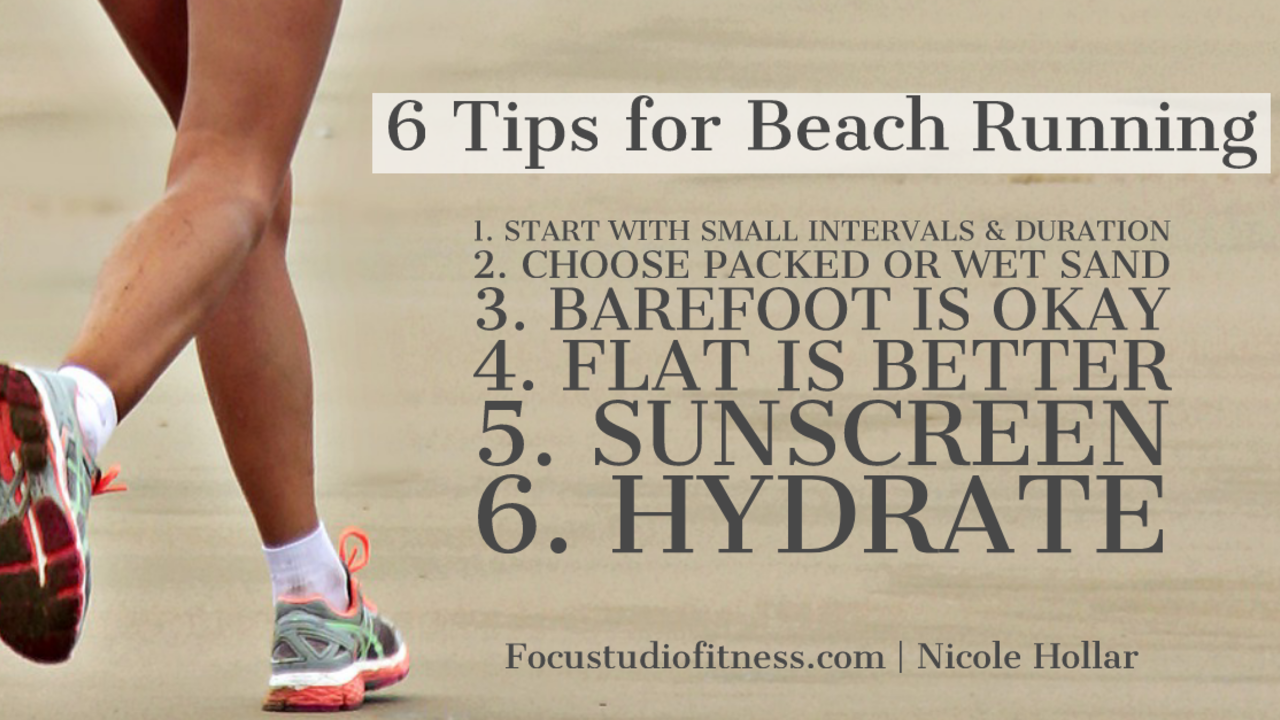Beach Running Tips
To improve your beach running experience, wear proper footwear and stay hydrated during your workout. Running on soft sand engages more muscles, boosting your workout intensity and enhancing endurance.
Breathing in fresh ocean air can invigorate your mind and body, providing a rejuvenating workout experience. The soothing sound of waves can help you relax, reduce stress, and enhance your overall well-being. Proper warm-up and cool down routines are essential to prevent injuries and maximize performance during beach runs.
By incorporating these tips, you can enjoy a fulfilling and effective beach running session.
Benefits Of Beach Running
Running on the beach offers a plethora of benefits that can enhance your overall fitness, including improved cardiovascular health and enhanced muscle engagement. The natural terrain of the beach creates a unique environment for running, providing a more challenging yet rewarding workout experience.
Improved Cardiovascular Health
Beach running demands extra effort due to the resistance of the sand, effectively increasing your heart rate and oxygen consumption. This leads to improved cardiovascular endurance and strength, contributing to a healthier heart and enhanced overall fitness.
Enhanced Muscle Engagement
The soft, uneven surface of the beach engages more muscles in your legs, ankles, and feet, compared to running on hard pavement or treadmills. This increased muscle involvement helps to strengthen and tone these areas, improving your overall running performance and reducing the risk of injuries typically associated with repetitive running on harder surfaces.
Choosing The Right Footwear
Choosing the right footwear is crucial for beach running. Opt for lightweight and breathable shoes to enhance comfort and prevent sand from getting trapped. Look for options with good traction to ensure stability on different terrains.
Lightweight And Breathable Shoes
Opt for shoes that are lightweight and breathable to prevent overheating and discomfort during your beach runs.
Good Traction And Support
Choose footwear with good traction and support to ensure stability and reduce the risk of slips or injuries on sandy surfaces.
Preventing Injuries
As beach running can be strenuous on the body, it’s crucial to take preventive measures to avoid injuries. Below are key tips to ensure a safe and injury-free beach running experience.
Warm-up And Stretch
Before starting your beach run, dedicate time to warm up your muscles with light cardio exercises. Follow this up with dynamic stretches focusing on your legs, hips, and core muscles to prepare them for the unique challenges of running on sand.
Be Mindful Of Uneven Terrain
Pay close attention to the varying surfaces of the beach to prevent tripping or twisting your ankle. Scan the area ahead and adjust your stride to accommodate changes in elevation and soft spots, maintaining stability throughout your run.

Credit: marathonhandbook.com
Technique And Form
Beach running requires a different approach than running on pavement or trails. Proper technique and form are essential to prevent injury and maximize the benefits of beach running. Paying attention to your stride length and foot placement can make a significant difference in your performance and overall experience. Here are some valuable tips to help you refine your technique and form for beach running.
Shorter Strides
When running on the beach, it’s crucial to adjust your stride length. Shorter strides are preferred over longer ones. Shorter strides help in maintaining stability and decreasing the risk of slipping or sinking into the sand. Additionally, they enable efficient propulsion and reduce the strain on your muscles and joints. Focusing on shorter strides will enhance your overall beach running experience and help prevent potential injuries.
Soft Landing
Another crucial element of beach running technique is soft landing. Aim to land softly and smoothly with each step. This not only reduces the impact on your body but also ensures a more efficient transfer of energy, helping you to maintain momentum and minimize the strain on your muscles. Pay attention to your foot placement and aim to land in a gentle and controlled manner to get the most out of your beach running session. Prioritizing a soft landing will contribute to a more enjoyable and impactful workout by reducing the risk of discomfort and injury.
Dealing With Sand Resistance
Running on the beach can be an exhilarating experience, but it also presents a unique set of challenges, particularly when it comes to dealing with sand resistance. The uneven and soft surface can make each step more effortful, putting different demands on your body. However, with a few adjustments to your technique and mindset, you can overcome this resistance and make the most out of your beach running sessions.
Adjusting Your Pace
When running on sand, it’s important to adjust your pace to accommodate for the increased resistance. The softness of the surface requires a slower and more deliberate stride to maintain your balance and stability. Start by taking shorter steps and avoid overstriding, as this can cause your feet to sink deeper into the sand. Instead, focus on maintaining a consistent and controlled pace, allowing your legs to work efficiently against the resistance.
Gradually Increasing Effort
As you get accustomed to running on sand, it’s important to gradually increase your effort to build strength and endurance. Start with shorter distance runs and gradually increase the duration and intensity over time. This gradual progression allows your muscles to adapt to the additional resistance and reduces the risk of overexertion or injury. Remember to listen to your body and take breaks when needed.
Here are a few additional tips to help you conquer sand resistance:
- Opt for barefoot running: Running barefoot allows your feet to fully engage with the sand, providing a natural and balanced stride. However, if you prefer to wear shoes, choose lightweight and flexible ones that still provide adequate support.
- Strengthen your muscles: Incorporate strength training exercises that target your legs and core into your workout routine. This additional strength will help you power through the sand resistance more effectively.
- Vary your terrain: Mix up your beach running routine by exploring different types of sand, such as wet and compact or dry and loose. This variation challenges your body in different ways and keeps your workouts interesting.
- Stay hydrated: Running on the beach can be more demanding, so make sure to drink plenty of water before, during, and after your run to stay hydrated and maintain optimal performance.
- Enjoy the scenery: While dealing with sand resistance may require extra effort, don’t forget to take in the beautiful surroundings and enjoy the calming sound of the ocean. Running on the beach is a unique experience that allows you to connect with nature in a special way.

Credit: www.nicolehollar.com

Credit: www.womenshealthmag.com
Frequently Asked Questions Of Beach Running Tips
Faq 1: How Can I Protect My Feet While Beach Running?
To protect your feet while beach running, opt for lightweight and flexible sneakers with good traction. Avoid wet or sharp areas to prevent injuries.
Faq 2: Should I Run Barefoot On The Beach?
Running barefoot on the beach can provide added benefits, such as strengthening muscles and improving balance. Remember to start slowly and gradually increase the intensity to avoid strains.
Faq 3: What Is The Best Time To Go Beach Running?
Early morning or late afternoon is the ideal time for beach running as the sand is cooler and the sun is not too harsh. Avoid peak hours to have a more enjoyable and comfortable running experience.
Conclusion
Incorporate these beach running tips to maximize your performance and enjoyment while keeping safety in mind. By focusing on proper hydration, footwear, and technique, you can make the most of your beach run. Remember to listen to your body, take breaks if needed, and adjust your pace.
Happy running!






